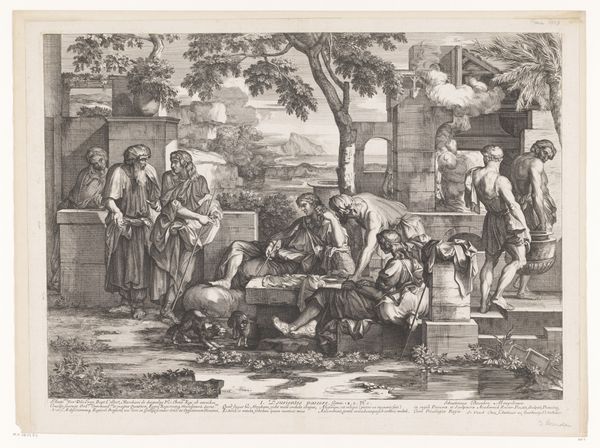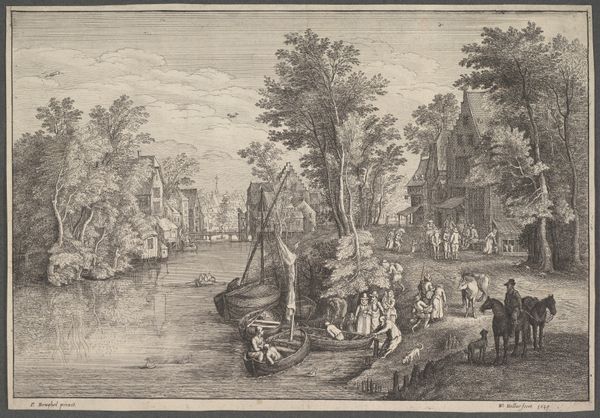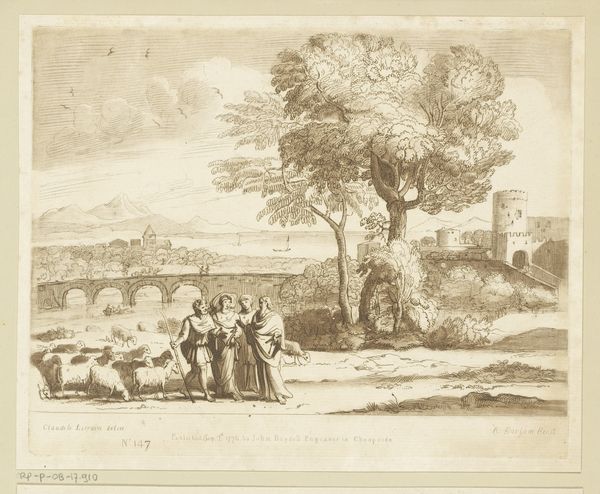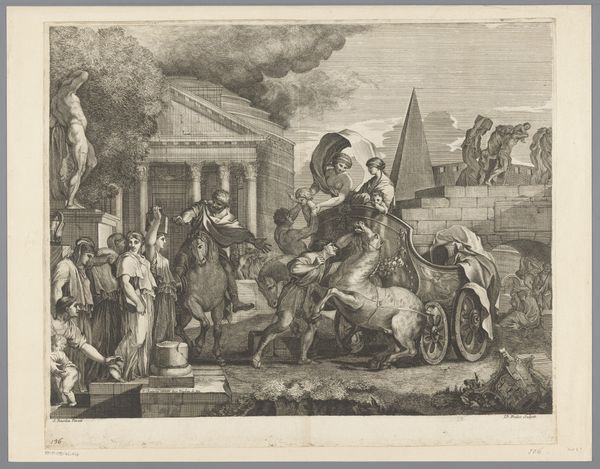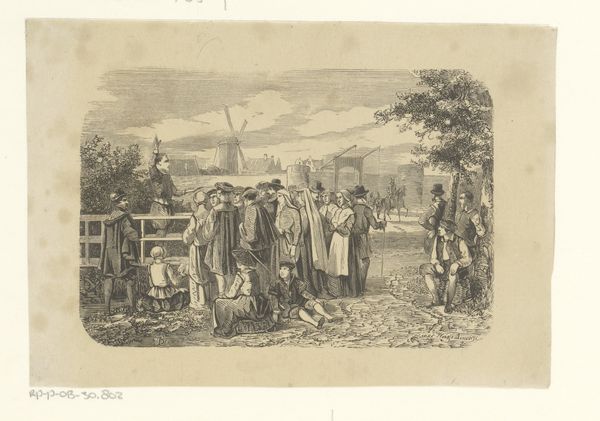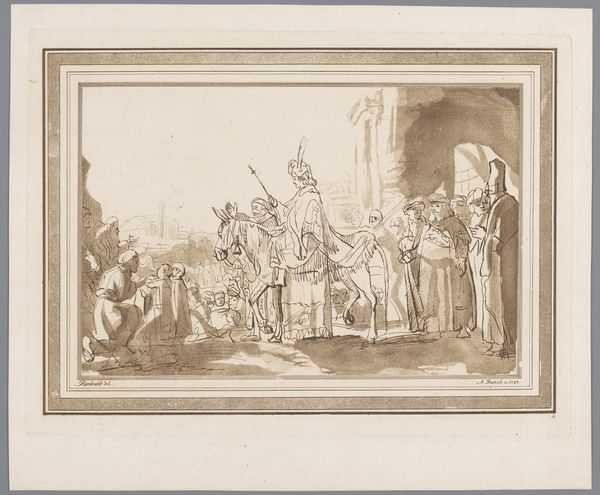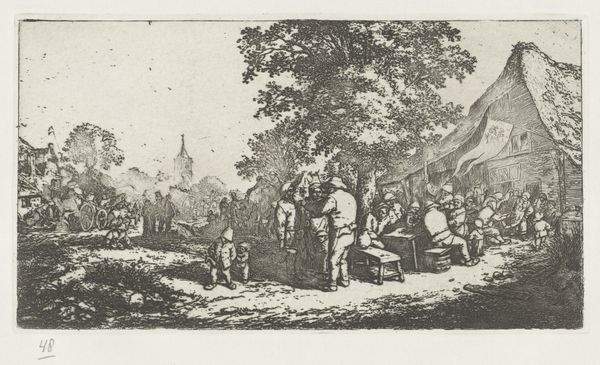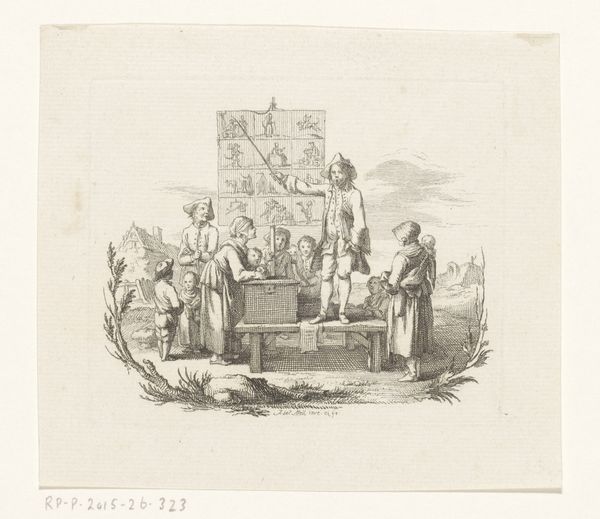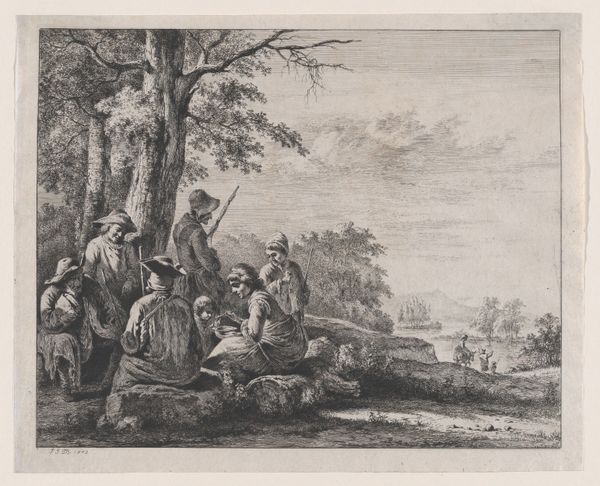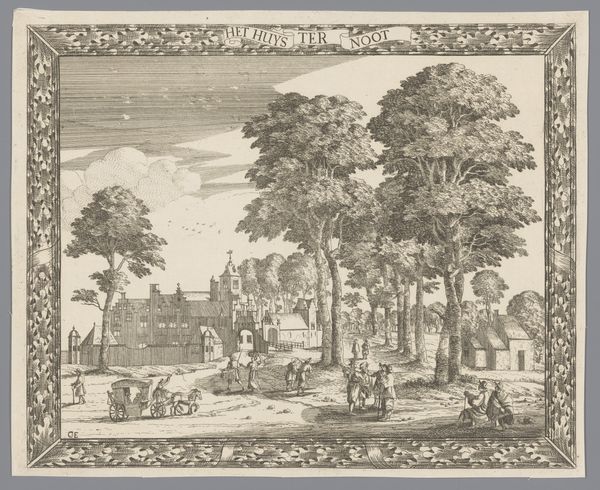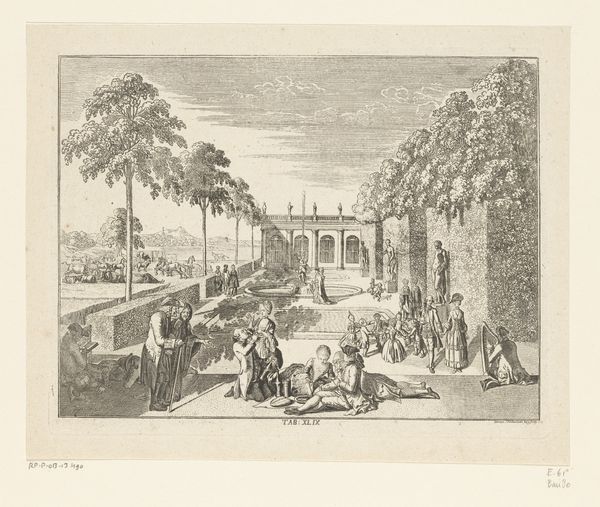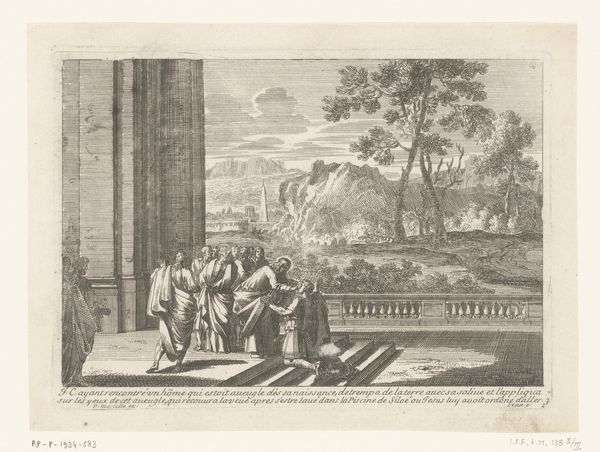
Fotoreproductie van een tekening van een straatgezicht te Haarlem door Esaias van de Velde 1902
0:00
0:00
drawing, paper, ink, pencil
#
drawing
#
narrative-art
#
dutch-golden-age
#
paper
#
ink
#
pencil
#
cityscape
#
genre-painting
#
realism
Dimensions: height 180 mm, width 237 mm
Copyright: Rijks Museum: Open Domain
Editor: This is a reproduction of a drawing by Esaias van de Velde titled "Street View in Haarlem", dated 1902. It's rendered in ink and pencil on paper and it strikes me as a fascinating glimpse into everyday life. I'm particularly drawn to the composition and how the figures seem almost arranged like a stage. What kind of social commentary might Van de Velde be offering through this work? Curator: It's crucial to understand the social and economic context of the Dutch Golden Age to fully appreciate this genre scene. Notice how Van de Velde meticulously depicts different social classes within a single frame – the well-dressed burghers engaging in conversation are clearly distinct from the laborers and tradespeople bustling around the canal. What do you make of that juxtaposition? Editor: It definitely highlights the stratified society, but I wonder about the public role of art at the time. Was it primarily intended to reinforce those social hierarchies, or to perhaps critique them in subtle ways? Curator: Precisely. The Dutch Republic, despite its relative prosperity, was still navigating questions of wealth distribution and social mobility. Art played a pivotal role in shaping public perception. Think about the intended audience and the commissioning patrons. Were these images primarily for the elite to admire their own status, or was there a broader public being addressed, maybe even inviting contemplation of social inequities? And how would the original drawing of van de Velde be different from its fotoreproduction, given this context? Editor: That's a great point. Considering the patron and the distribution, that difference could say a lot. Now I’m seeing it less as a straightforward depiction and more as a carefully constructed social narrative. It makes you think about the artist’s position too, right? Curator: Exactly! Now you’re approaching the nuances of imagery in its time. This highlights the powerful and political nature of art back then and perhaps even today! Editor: Thanks. I see this work now as a rich visual document. There's more than initially meets the eye and so much historical information layered beneath the surface.
Comments
No comments
Be the first to comment and join the conversation on the ultimate creative platform.
